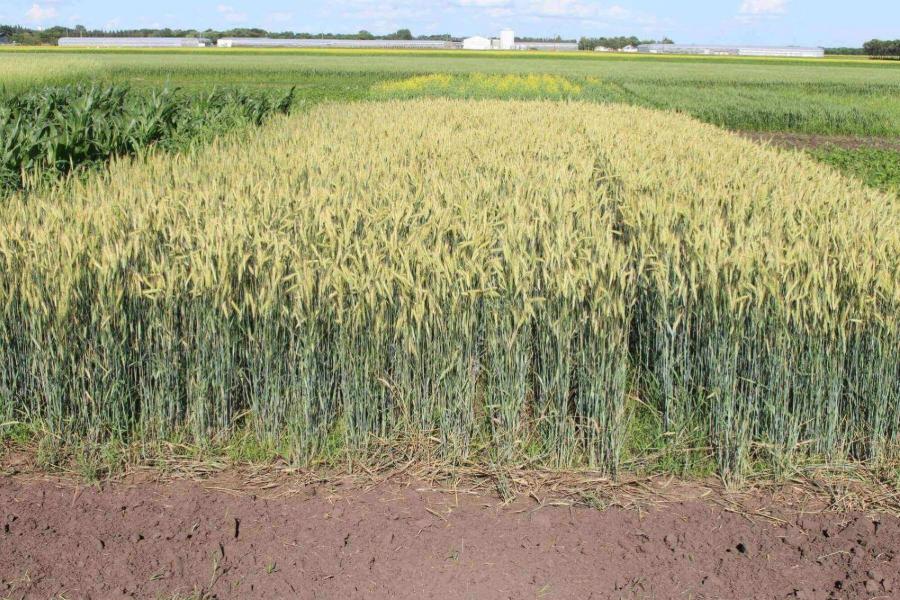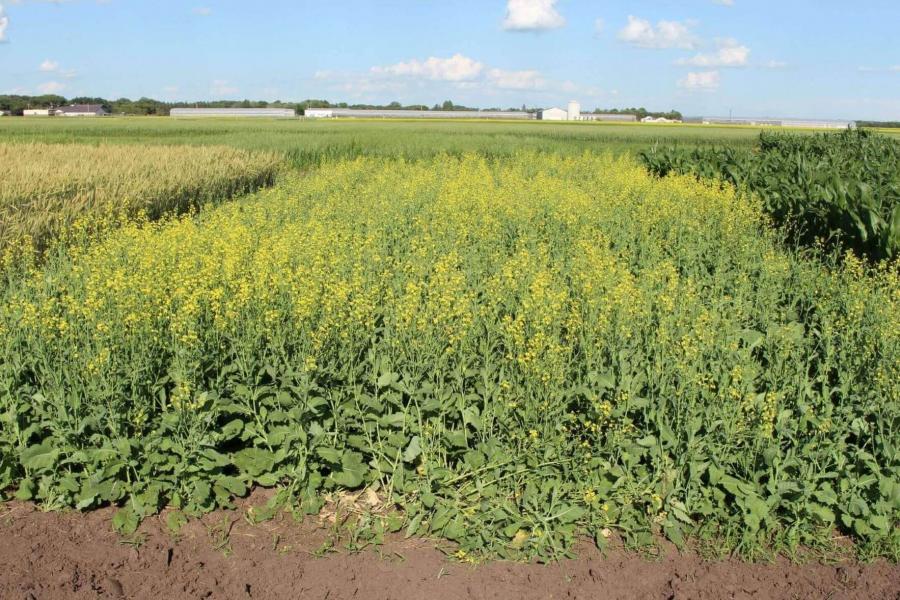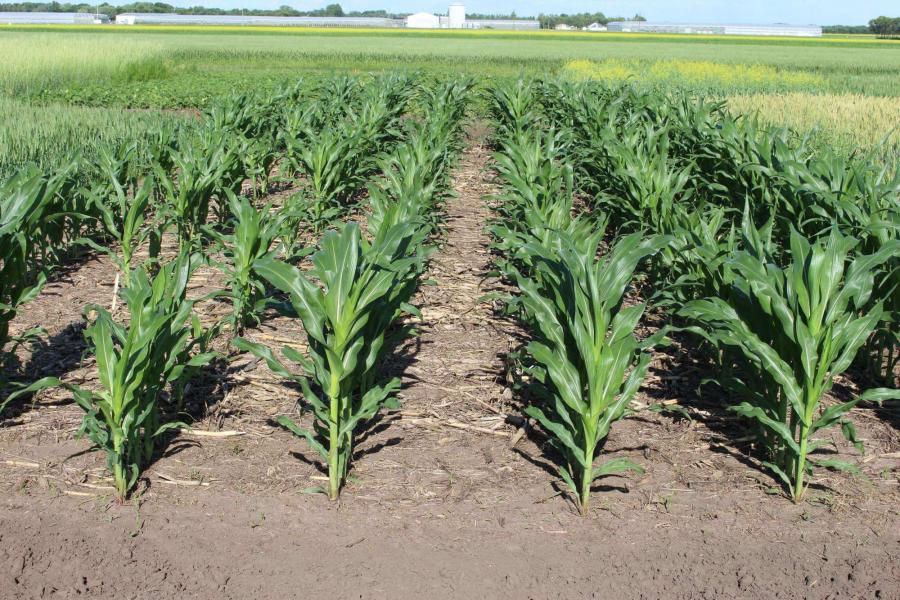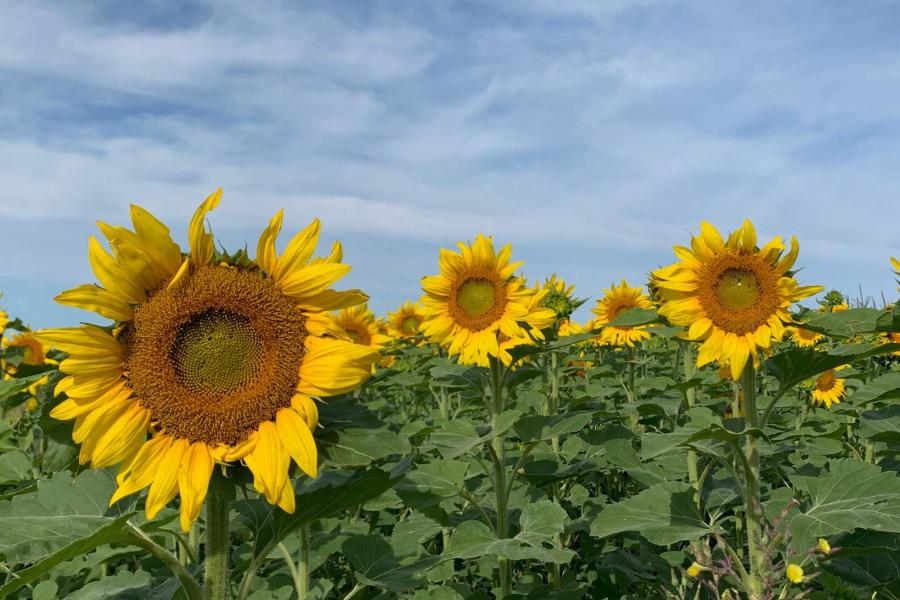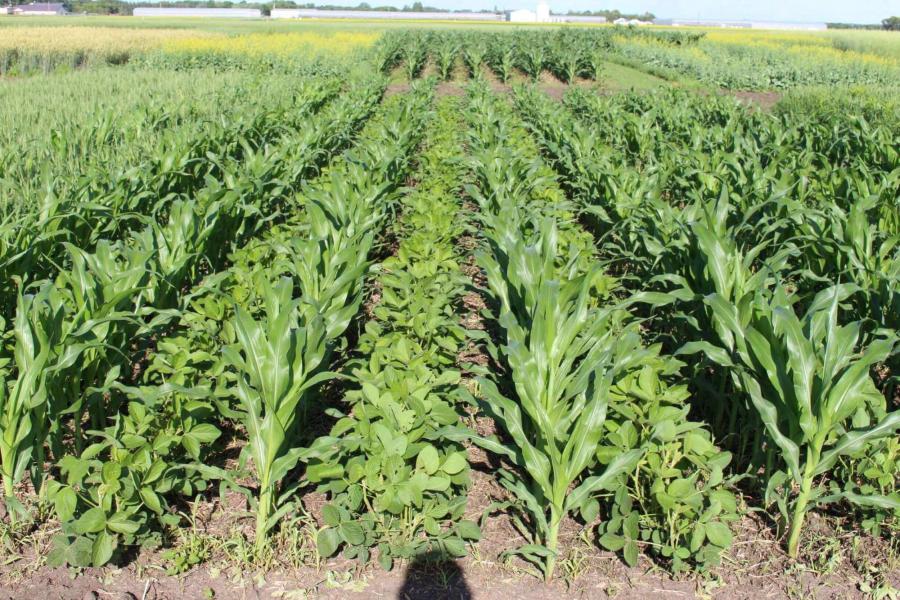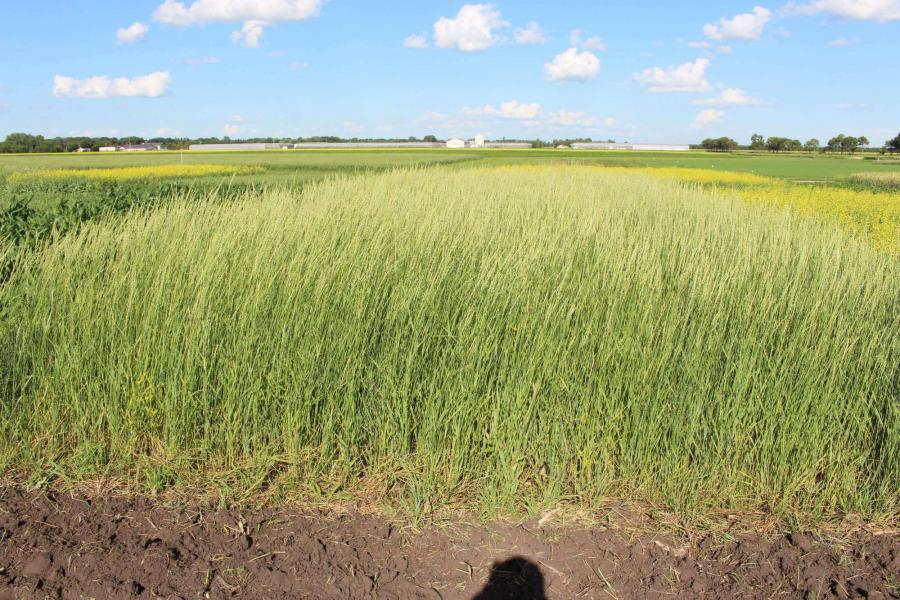Next generation no-till
This study began in 2018 and is part of a larger study titled “Optimizing Systems Productivity, Resilience and Sustainability in Major Canadian Ecozones”. The site in Carman, Manitoba is one of seven sites in three ecozones that will look at six carefully designed cropping systems and determine the best one for each ecozone. The Carman site is referred to here as the “Next Generation No-Till” study.
About the study
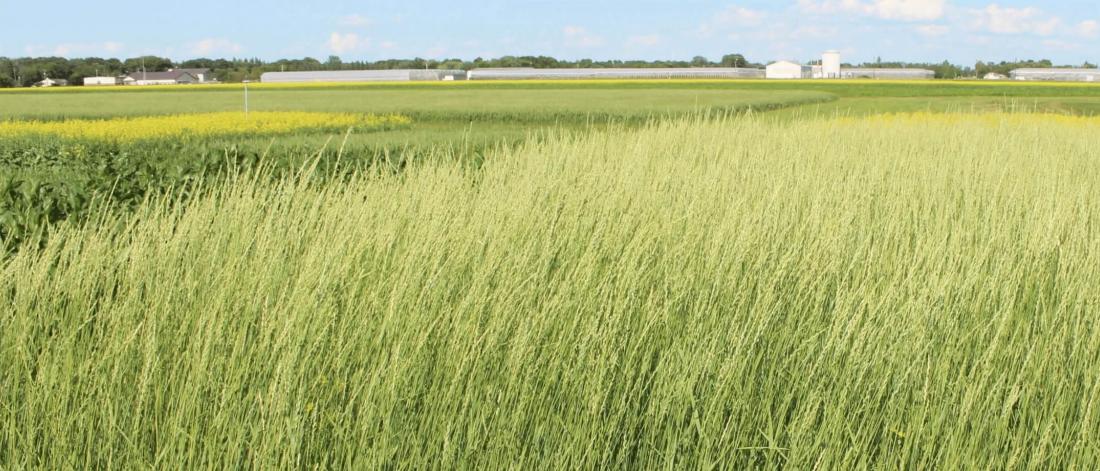
Experimental design
This study is a randomized complete block design and all rotations are fully phased, meaning all crops are grown each year.
Aerial view of a section of the study.
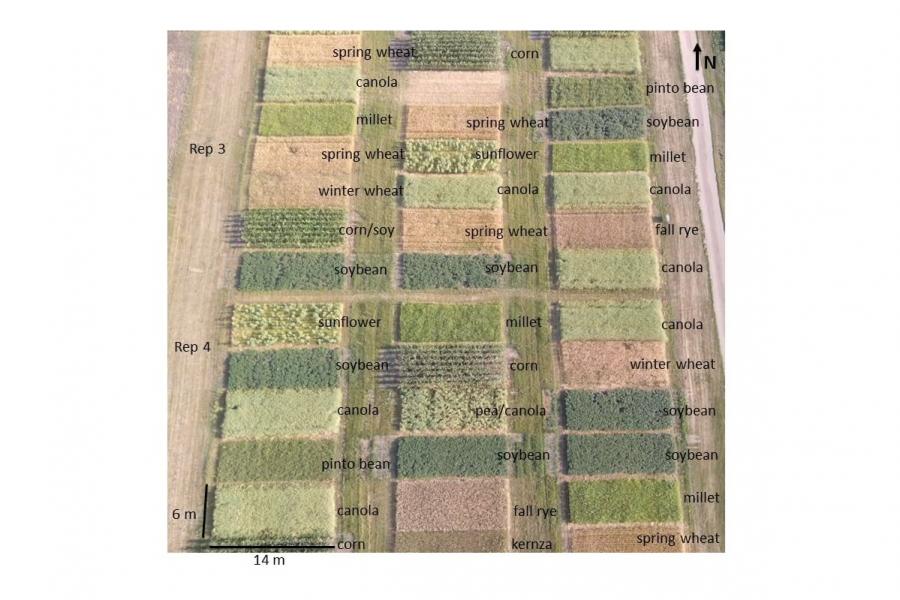
Cropping systems
More information
Staff and students
Contact us
Department of Plant Science
66 Dafoe Rd.
University of Manitoba
Winnipeg, MB R3T 5V6 Canada

